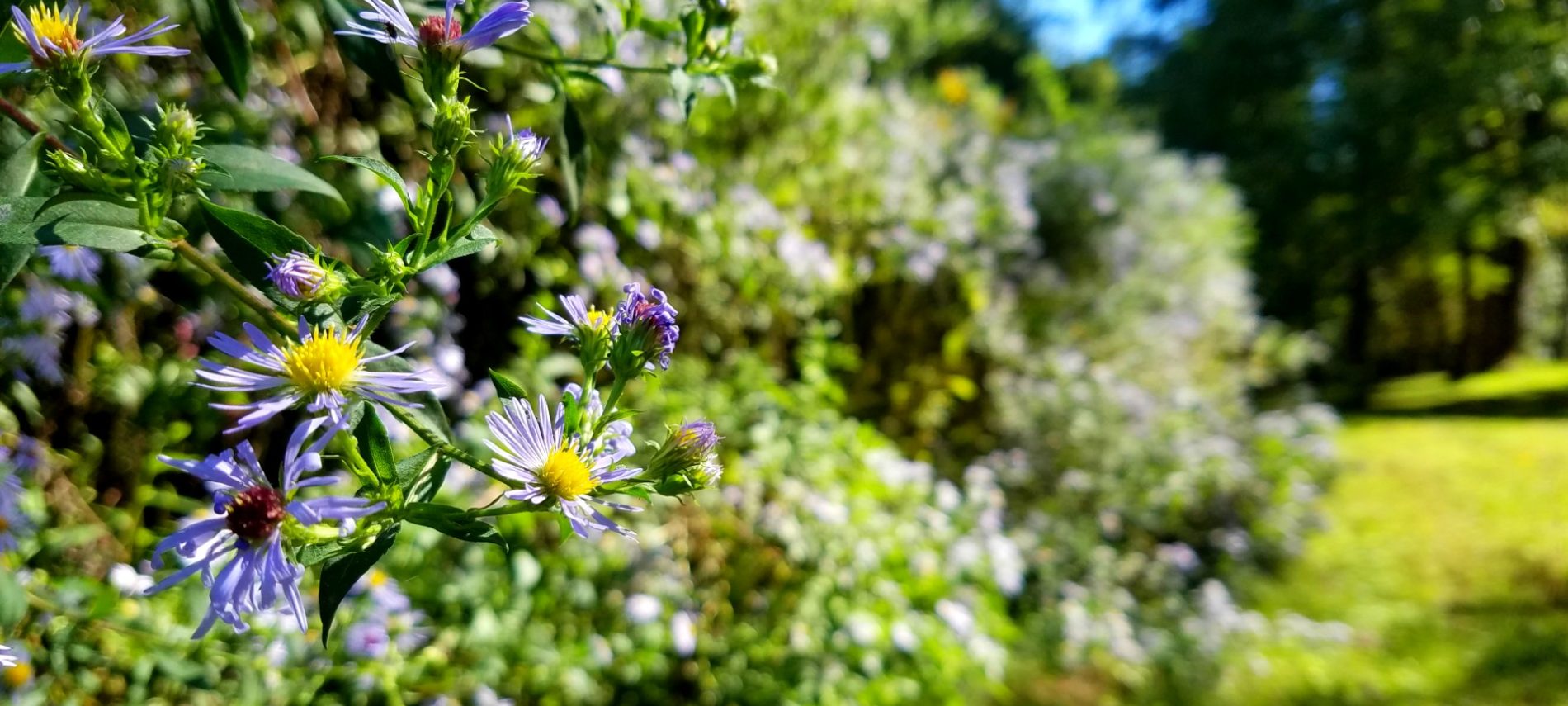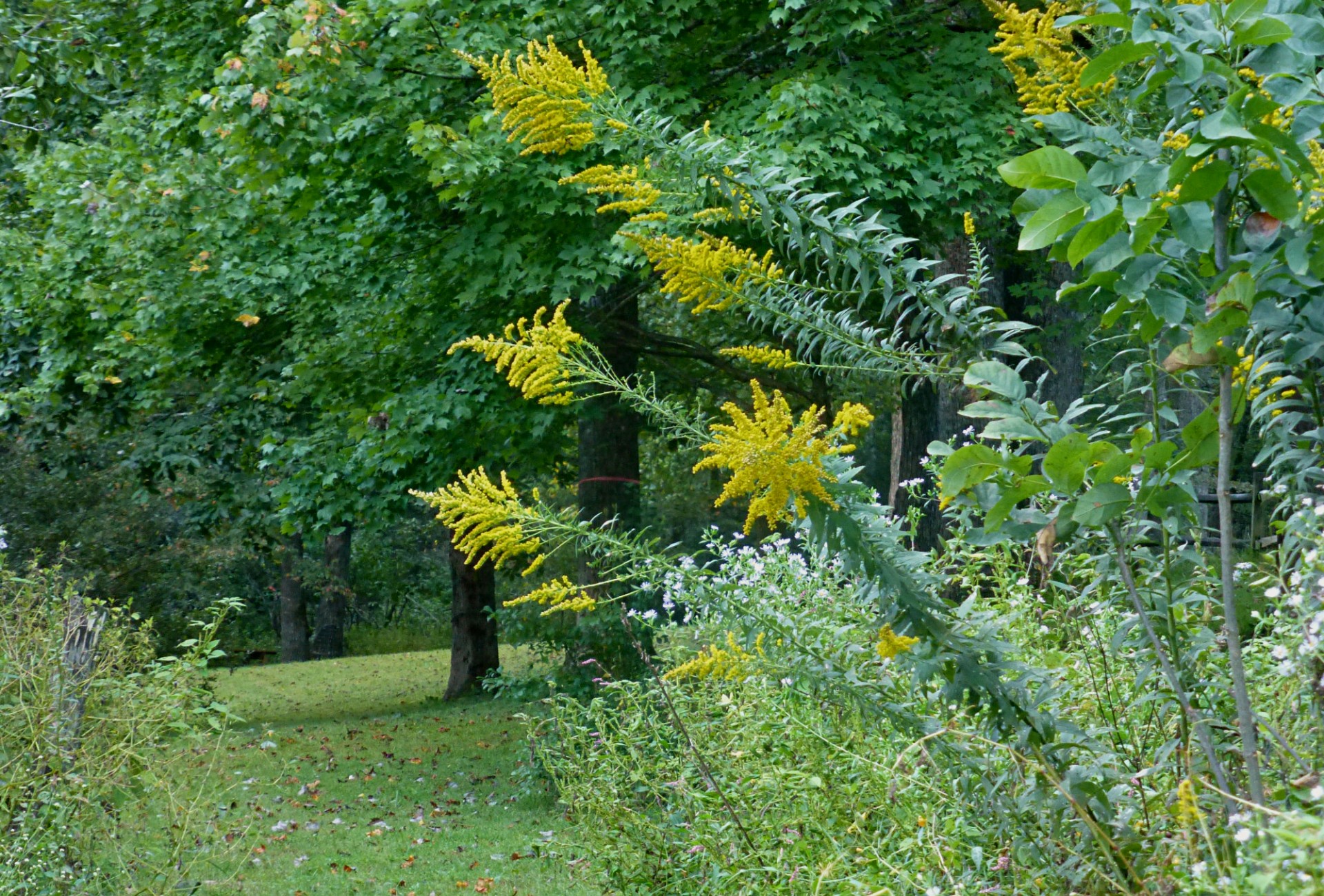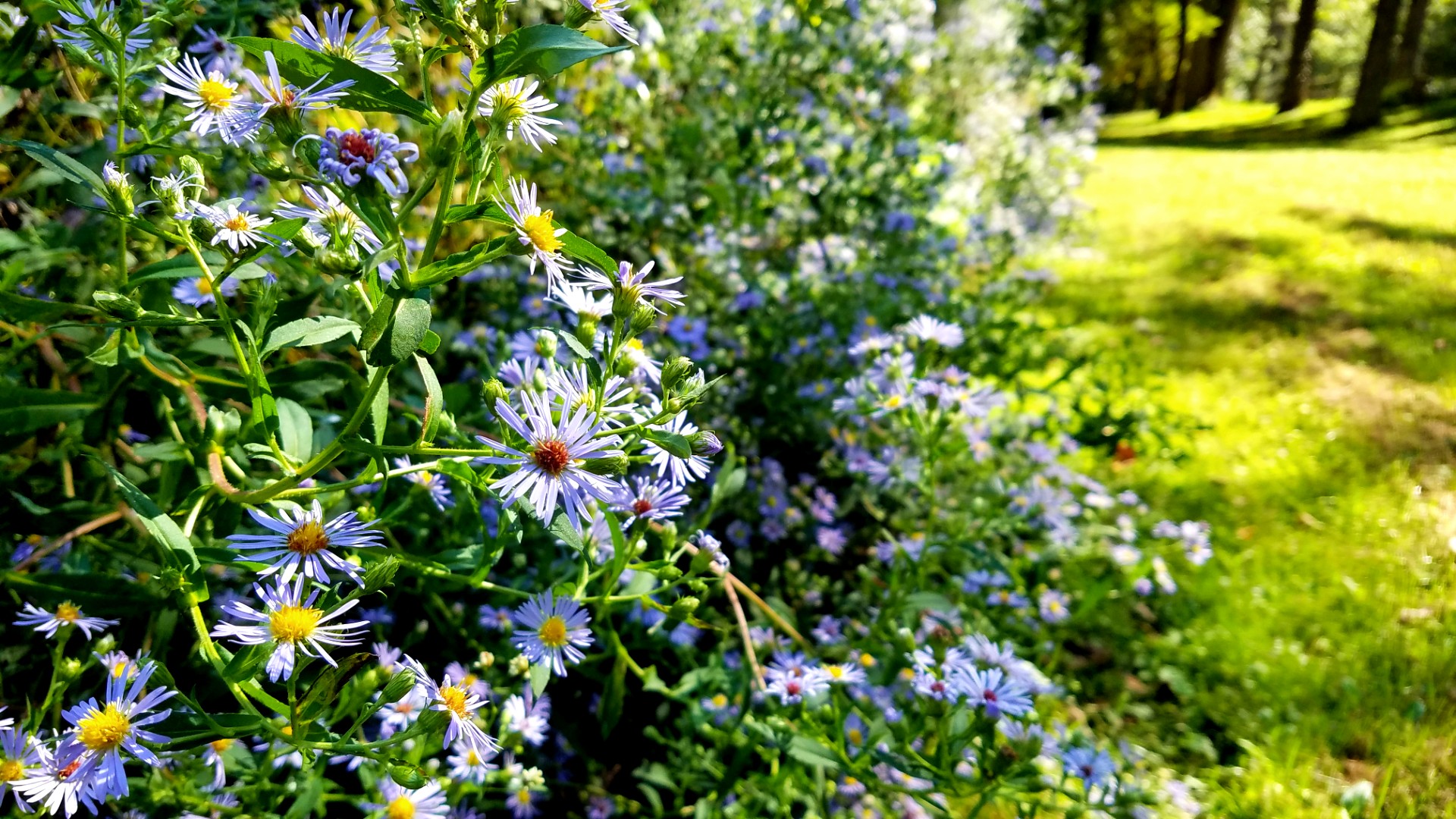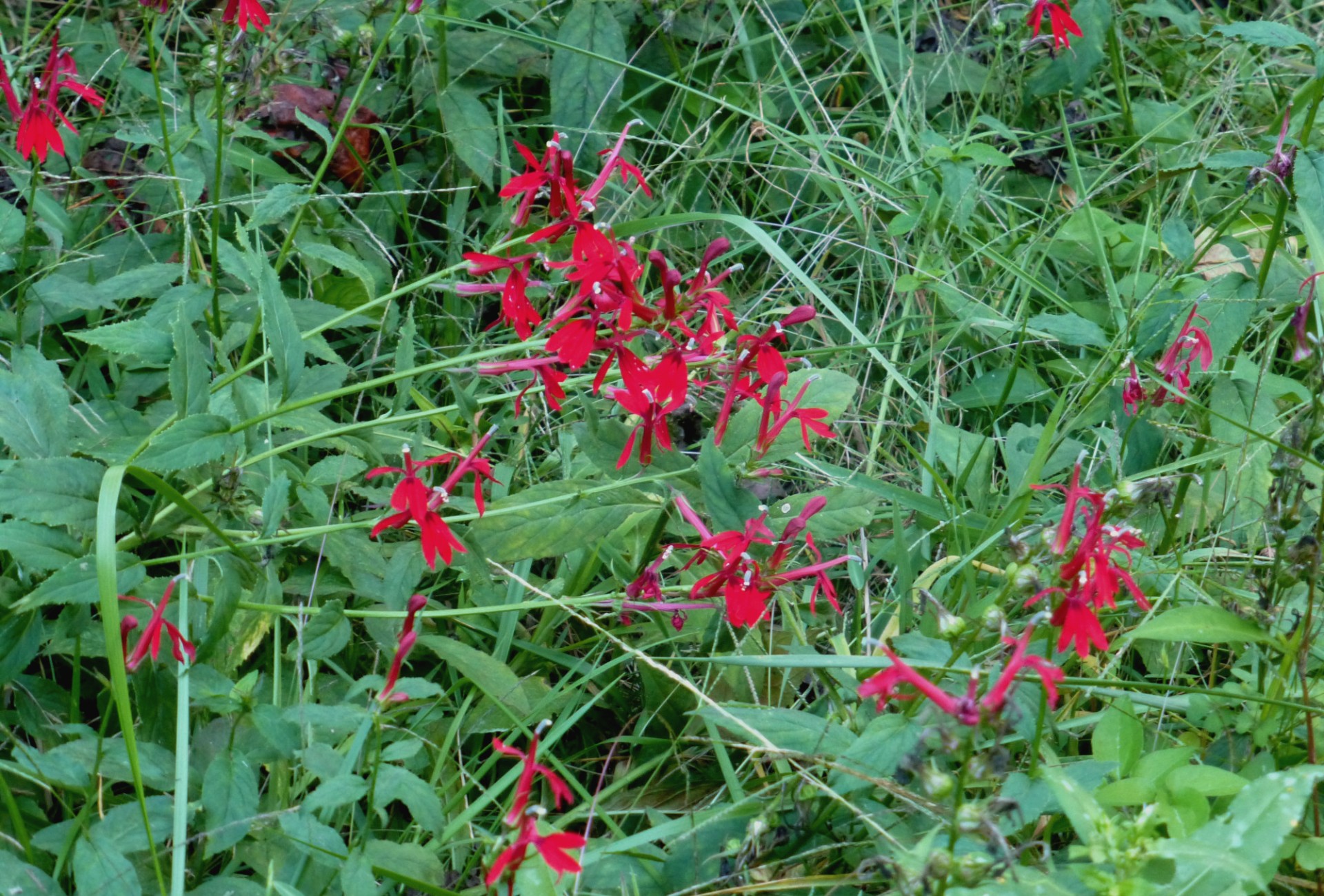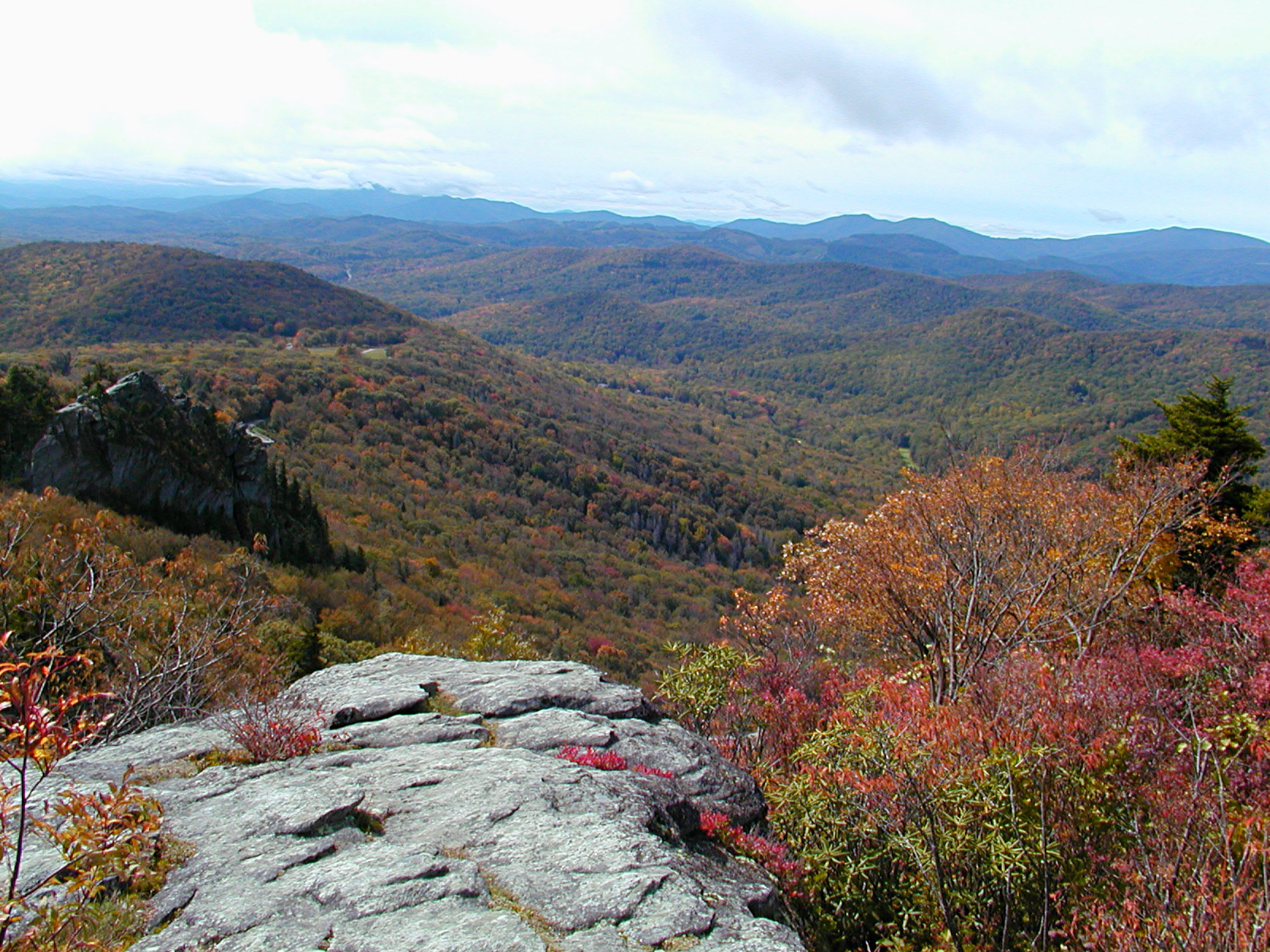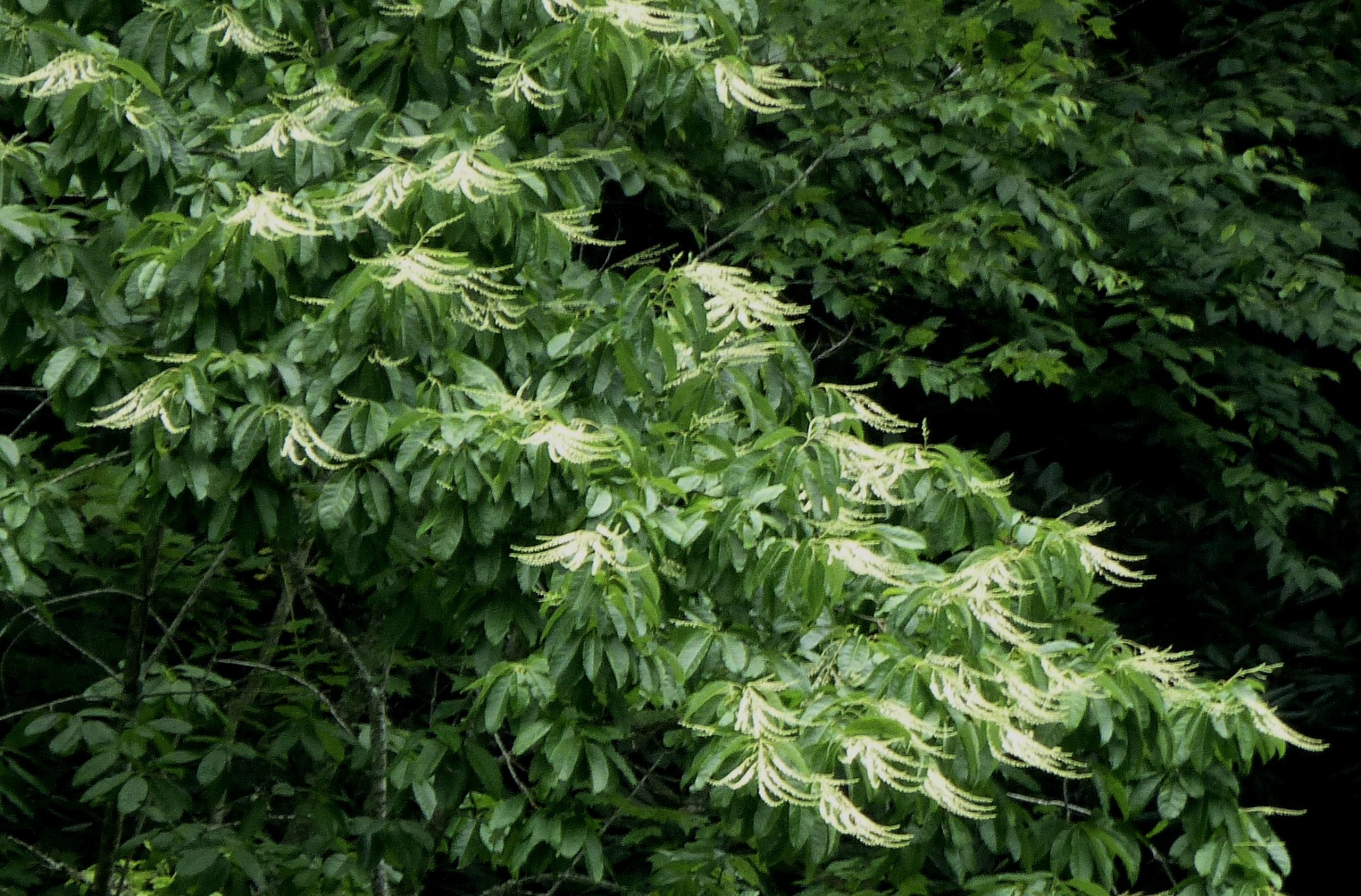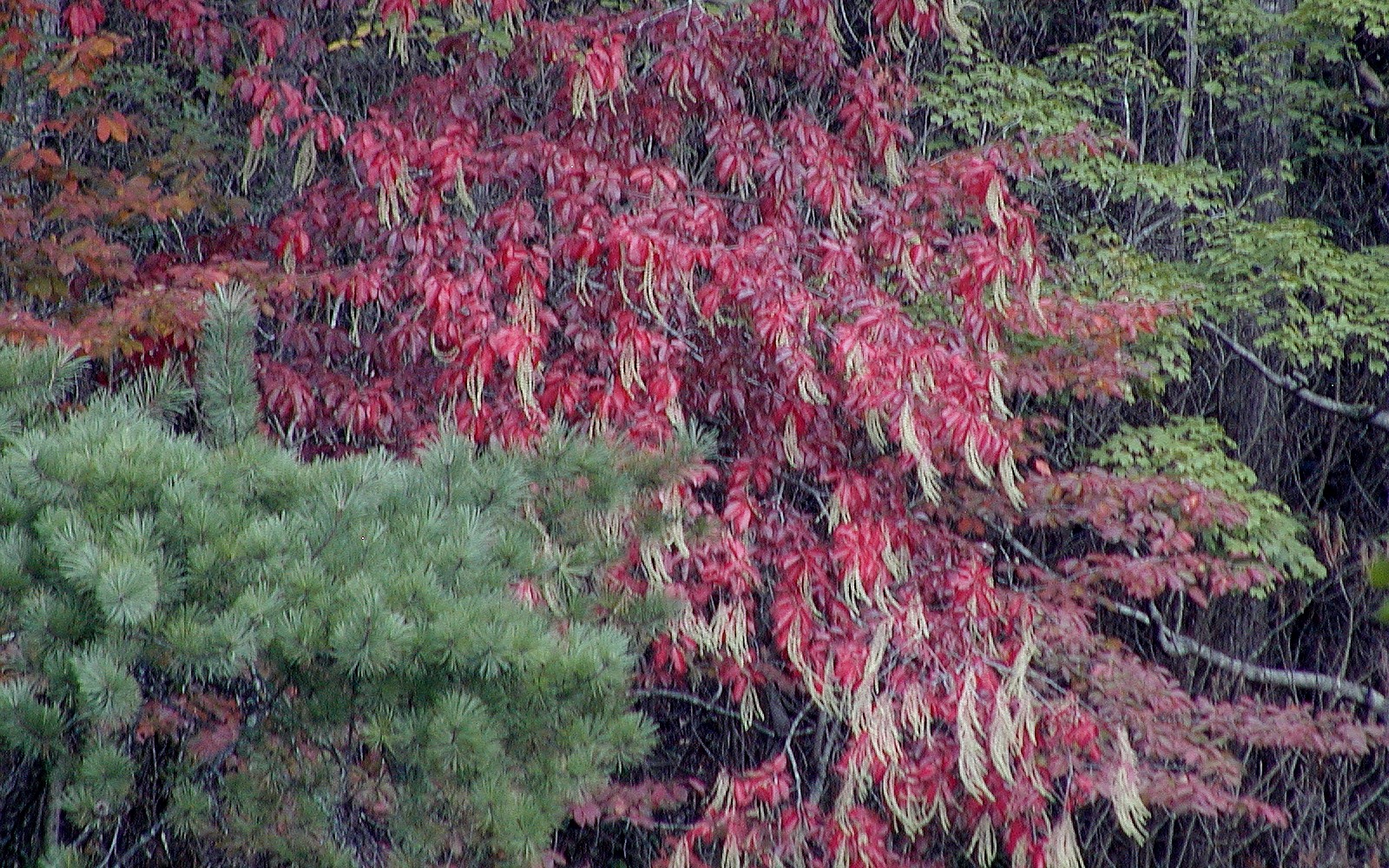Autumn is finally here, and with six to eight weeks of great fall color ahead, the mountains of Western North Carolina are sure to bring inspiration and joy. And sweater weather, yay! The Asheville area has one of the longest fall seasons in the world, and we’re just getting started with week 1 of our fall foliage reports. Let’s begin!
First the not-so-great news… we’ve had warmer than normal temperatures in the mountains during September, which means sweater weather isn’t quite here yet and the start of the fall color show is somewhat delayed. However, the great-for-sure news is that with mostly dry weather this year, fall color experts are predicting very vibrant fall foliage for 2019 once the leaves do start changing.
During the first week of Fall in the North Carolina mountains, Mother Nature’s focus is always on gorgeous wildflowers that never disappoint regardless of whether we’ve got leaves changing color on the trees. Blooms that will catch your eye include goldenrod (not to be confused with sneeze-inducing ragweed), purple asters, and bright red cardinal flower, just to name a few.
For beautiful wildflowers and nice views, with the potential for bits of fall color in late September, take the Blue Ridge Parkway north from Asheville (via Hwy 70) or Marion (via Hwy 80) to Grandfather Mountain (elevation: 5,300 ft). One-third of Grandfather Mountain is maintained by the Grandfather Mountain Stewardship Foundation and is open to the public from 9:00 a.m. to 6:00 p.m. This part of the mountain has a wonderful picnic area, education center, wildlife habitats, hiking trails, a mile-high swing bridge, and excellent views all along the drive up the mountain. The other two thirds of Grandfather are undeveloped and part of the state park system, with back country trails accessible only by foot.
Now as some of you know, we pick a topic or theme to accompany our fall foliage reports. This year’s theme is Seeing the Forest through the Trees. I mean, our place, the Inn on Mill Creek Bed & Breakfast, is two miles into Pisgah National Forest, after all. So the theme is quite appropriate, no? Each week, we’ll highlight a tree native to the North Carolina mountains, with details including what color the tree’s leaves change in the Fall. First up, the sourwood tree:
If you’ve been to the Asheville area and/or have been our guest, you may recognize the word “sourwood” from our fabulous local honey, which we use here at the Inn on Mill Creek. Well, we can thank the honeybees’ love of the sourwood tree for that awesome honey. In the summertime, the tree has fantastic clusters of fragrant, white flowers. The sourwood tree also has beautiful, dark green leaves that change to a bold purplish crimson in the fall. It’s one of the very first trees to change, along with dogwoods, helping us mark the start of the fall leaf season.
The sourwood tree can grow up to 30 feet tall, but it’s not a wide-trunked tree, so it fits in nicely with other trees in the landscape. For what it’s worth, the best view of sourwood trees at the Inn on Mill Creek are from the windows of the Carolina Room and from the south lawn beyond the sculptures. The sourwood tree gets its name from the taste of its leaves, but it goes by other names, like sorrel tree and lily-of-the-valley tree (due to the similarity of its flowers to lily-of-the-valley). Despite the tree’s acrid-sounding name, the honey made from sourwood trees tastes amazing, but it can sometimes be challenging to find, so be sure to ask us where to pick some up when you visit the area if you love honey.
See you next week for the second of our fall foliage reports!

